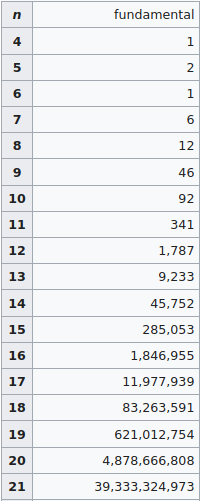N-Queens Puzzle, Part 2.5-Brute Force Algorithm (All Solutions)
July 06, 2020 Stardate: 73978.2 Tagged as: Python
This article is Part 2.5 in a series implementing different algorithms to solve the N-Queens problem. I named it 2.5 because it is an extension of Part 2 where I implemented the Brute Force Search Algorithm. In that algorithm I stopped evaluating the candidates once a solution was found. While it involves much more computation, in this implementation I continue to evaluate the candidates to provide all solutions.
See the first article “Part 1-Introduction” for an overview of the puzzle and some background information.
Solution Set
For a given number of queens there can be many solutions that satisfy the problem. Not surprisingly, as the size of the board (NxN) and number of queens (N) increases so does the number of solutions. Here is a table from Wikipedia that show number of fundamental solutions per number of queens.

Code
As in Part2 I used an optimized Python library called itertools to calculate the combinations and permutations. The only big difference is that this code evaluates all the permutations as a solution whereas Part2 code loops through each permutation and stops when it finds a solution.
#### IMPORTS
import itertools
#### FUNCTIONS ####
def create_empty_board(N):
"Create an NxN board of zeros"
return [[0]*N for _ in range(N)]
def perm_to_board(perm):
"Makes a board from a given permutation"
board = create_empty_board(len(perm))
for ndx in range(len(perm)):
board[perm[ndx]][ndx] = 1
return board
def print_board(board):
"Pretty print the board."
print()
for row in board:
print(row)
return
def is_solution(perm):
"Check if input array contains queens on the same diagonal"
# Given two queens, they are on the same diagonal if the horizontal
# distance between them is equal to the vertical distance between
# them.
#
# Cells (row1,col1) and (row2,col2) are on the same diagonal,
# if and only if, |row1-row2|=|col1-col2|.
#
# Remember, permutations care about order whereas combinations do not
for (i,j) in itertools.combinations(range(len(perm)), 2):
if ( abs(i-j) == abs(perm[i]-perm[j]) ): return False
return True
def find_permutations(N):
"Find all possible permuations of 0-(N-1)"
return list(itertools.permutations(range(0,N)))
def find_solutions(all_permutations):
"Utility function that checks validity of each solution"
solutions = []
for perm in all_permutations:
if is_solution(perm): solutions.append(list(perm))
return solutions
if __name__ == '__main__':
# input size of board = number of queens
print("How many queens to place?")
# convert input string to a number
N = int(input())
all_permuations = find_permutations(N)
solutions = find_solutions(all_permuations)
print("There are",len(solutions),"solutions found.")
print_board(solutions)Software Versions
This is an automated list of software versions used during the writing of this article.
Software Version OS Ubuntu 20.04 LTS python 3.7.4